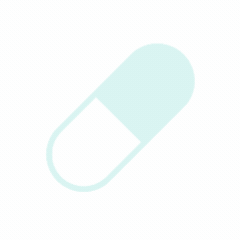Drug updated on 12/11/2024
| Dosage Form | Tablet (oral; 60 mg) |
| Drug Class | Estrogen agonists/antagonists |
| Ongoing and Completed Studies | ClinicalTrials.gov |
Indication
- For the treatment of moderate to severe dyspareunia, a symptom of vulvar and vaginal atrophy, due to menopause.
- For the treatment of moderate to severe vaginal dryness, a symptom of vulvar and vaginal atrophy, due to menopause.
Latest News

Summary
- This summary is based on the review of four systematic review(s)/meta-analysis(es). [1-4]
- Ospemifene has been evaluated primarily in postmenopausal women with moderate to severe vulvovaginal atrophy (VVA) and genitourinary syndrome of menopause (GSM), showing improvements in subjective and objective signs of atrophy and sexual function. In breast cancer survivors, ospemifene demonstrated effectiveness in treating GSM and vulvovaginal atrophy, potentially enhancing quality of life.
- The studies included women undergoing treatments for GSM, with findings indicating that ospemifene is a viable treatment option among nonestrogen therapies, providing benefits similar to other treatments while maintaining a favorable safety profile, notably with no significant endometrial concerns after up to 52 weeks of use.
- Ospemifene demonstrated a favorable safety profile in the treatment of GSM and VVA, with post-treatment endometrial thickness remaining within the recognized safe range (under 4 mm) and no cases of endometrial carcinoma or hyperplasia observed after up to 52 weeks of treatment.
- The drug was associated with a minimal increase in adverse events compared to other nonestrogen therapies, and specific safety concerns for breast cancer survivors regarding ospemifene were not detailed.
- Ospemifene was assessed primarily in postmenopausal women with moderate to severe VVA and breast cancer survivors (BCS), showing effectiveness in improving symptoms of GSM and vulvovaginal atrophy; however, specific subgroup differences in effectiveness were not detailed.
Product Monograph / Prescribing Information
| Document Title | Year | Source |
|---|---|---|
| Osphena (ospemifene) Prescribing Information. | 2024 | Duchesnay USA, Princeton, NJ |
Systematic Reviews / Meta-Analyses
| Document Title | Year | Source |
|---|---|---|
| Nonestrogen Therapies for Treatment of Genitourinary Syndrome of Menopause: A Systematic Review | 2023 | Obstetrics and Gynecology |
| Efficacy, tolerability, and endometrial safety of ospemifene compared with current therapies for the treatment of vulvovaginal atrophy: a systematic literature review and network meta-analysis | 2023 | Menopause (New York, N.Y.) |
| Therapeutic Choices for Genitourinary Syndrome of Menopause (GSM) in Breast Cancer Survivors: A Systematic Review and Update | 2023 | Pharmaceuticals (Basel, Switzerland) |
| Efficacy of Hormonal and Nonhormonal Approaches to Vaginal Atrophy and Sexual Dysfunctions in Postmenopausal Women: A Systematic Review | 2022 | Revista Brasileira De Ginecologia E Obstetricia : Revista Da Federacao Brasileira |
Clinical Practice Guidelines
| Document Title | Year | Source |
|---|---|---|
| The 2022 hormone therapy position statement of The North American Menopause Society. | 2022 | Menopause |
| Management of postmenopausal vulvovaginal atrophy: recommendations of the International Society for the Study of Vulvovaginal Disease. | 2021 | Gynecological Endocrinology |
| Guideline No. 422b: Menopause and Genitourinary Health. | 2021 | Journal of Obstetrics and Gynaecology Canada |

